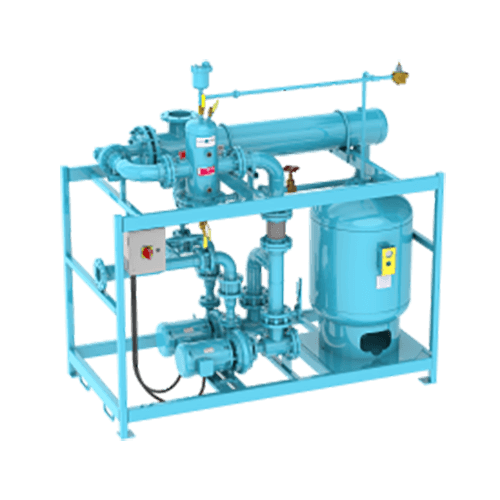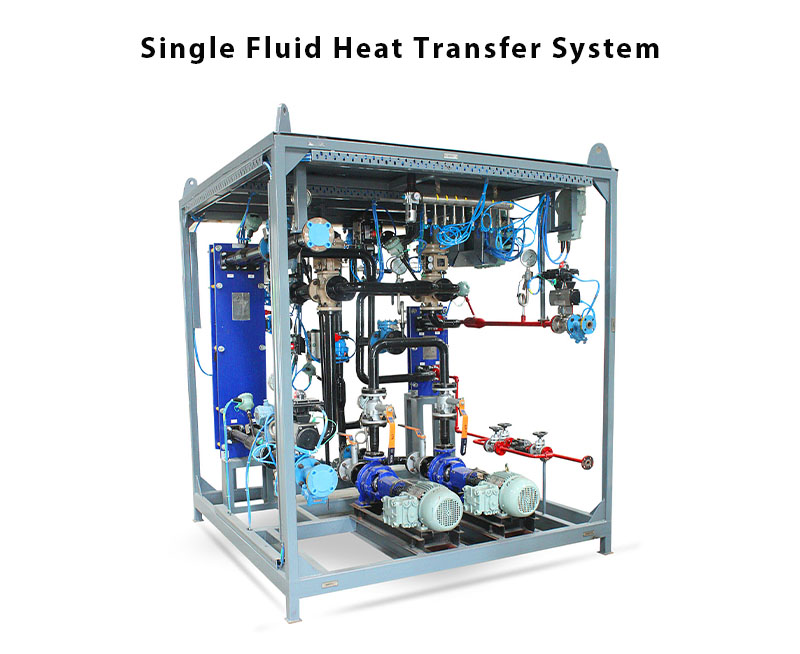How DVS Heat Transfer Systems Are Making Phase Change Materials More Efficient Than Ever
The Duty of Heat Transfer Solutions in Sustainable Power Solutions for the Future
Heat transfer systems are essential in the pursuit for lasting energy services. They optimize thermal energy management, boosting the effectiveness of sustainable innovations. By using systems like conduction, radiation, and convection, these systems decrease energy losses. Their duty in solar thermal and geothermal applications is specifically significant. As developments arise, the capacity for more developments raises essential inquiries regarding future energy approaches. What growths will form the landscape of sustainable energy?
Recognizing Heat Transfer Equipments

The Relevance of Thermal Power Monitoring
Reliable thermal energy management is essential for making the most of power efficiency and reducing waste in various systems. By regulating temperature level and enhancing Heat transfer processes, companies can significantly reduce energy consumption and functional prices. Effective monitoring includes the execution of innovative modern technologies and practices that keep an eye on and regulate thermal conditions within systems, making sure that power sources are utilized efficiently. Additionally, appropriate thermal power management contributes to minimizing greenhouse gas discharges, lining up with international sustainability objectives. It likewise improves system reliability and performance, leading to boosted item top quality and longer tools life-span. Inevitably, focusing on thermal power administration is a vital step in the direction of producing a lot more lasting power remedies and cultivating an accountable method to energy consumption in property and commercial contexts.
Applications of Heat Transfer in Renewable Energy
While different renewable resource sources guarantee sustainability, the efficient application of Heat transfer plays a crucial duty in their efficiency. In wind energy systems, Heat transfer is used for generator component cooling, enhancing performance and durability. Geothermal power counts on reliable Heat exchange between the planet's subsurface and the fluid flowing in the system, optimizing energy extraction. Biomass energy processes additionally gain from Heat transfer, as it assists in converting natural materials right into functional fuel via pyrolysis and gasification. Furthermore, in hydropower, keeping excellent temperatures in storage tanks can enhance energy outcome. Each of these applications demonstrates the crucial significance of Heat transfer systems in improving renewable energy modern technologies, inevitably adding to a much more lasting power future.
Enhancing Solar Thermal Power Performance
As solar thermal power systems continue to develop, improving their effectiveness has actually ended up being crucial for making best use of energy result. Developments in Heat transfer innovations, such as boosted thermal storage products and ingenious Heat exchangers, play a significant function in enhancing efficiency. By using advanced products that have premium thermal conductivity, systems can catch and move Heat better. Furthermore, integrating radar that adhere to the sun's path warranties that enthusiasts obtain ideal solar direct exposure throughout the day. Utilizing nanotechnology in solar absorbers can better boost energy absorption prices. Incorporating automated control systems aids manage temperature levels and handle energy distribution effectively, leading to decreased losses and enhanced overall system efficiency. These enhancements lead the way for more lasting solar thermal power options in the future.
Geothermal Home Heating: A Sustainable Solution
Geothermal heating provides a practical option for lasting power, using significant ecological benefits with decreased greenhouse gas emissions. Its efficiency and cost-effectiveness make it an appealing alternative to traditional home heating systems. Nonetheless, difficulties connected to execution needs to be resolved to optimize its prospective impact.
Environmental Advantages of Geothermal
Standard heating approaches contribute considerably to greenhouse gas emissions, geothermal home heating offers a compelling alternative that minimizes ecological impact. By using the Earth's interior Heat, geothermal systems use an eco-friendly energy source, considerably minimizing dependence on fossil gas. This approach creates marginal carbon emissions, making it a cleaner option for property and commercial heating. In addition, geothermal systems promote energy performance, as they need less energy contrasted to standard heater. DVS Heat Transfer Systems. The usage of geothermal energy likewise aids in decreasing air contamination, improving neighborhood air quality and public health and wellness. As a sustainable option, geothermal heating supports climate modification reduction initiatives, positioning itself as an essential part in the change in the direction of a greener future
Performance and Cost-Effectiveness
Just how does geothermal home heating determine up in regards to performance and cost-effectiveness compared to conventional furnace? Geothermal heating demonstrates exceptional efficiency, usually attaining a coefficient of efficiency (POLICE OFFICER) of 3 to 5, indicating it creates three to 5 units of Heat for every device of electrical energy taken in. This effectiveness translates into lower operating prices, specifically in areas with stable geothermal sources. Initial setup costs can be greater than traditional systems; however, lasting cost savings on energy bills and lowered maintenance expenses can counter these in advance investments. In addition, several federal governments incentivize geothermal systems with rebates and tax obligation credit scores, improving their cost-effectiveness. On the whole, geothermal heating arises as a visit this web-site economically feasible and lasting choice to more standard heating remedies.
Implementation Difficulties and Solutions
Numerous challenges can hamper the prevalent application of geothermal home heating systems, despite their clear benefits as a lasting power service. High first installation expenses commonly discourage investors and home owners, making financing a considerable obstacle. Furthermore, the geographical constraints of appropriate geothermal sites restrict ease of access in certain regions. Regional policies and permitting procedures can likewise make complex project advancement, bring about delays. Public understanding and understanding of geothermal systems continue to be reduced, hindering acceptance. To address these difficulties, targeted education and learning projects can boost open secret, while government incentives might minimize economic burdens. Collaborating with local authorities to streamline policies might assist in smoother job approvals, ultimately promoting the adoption of geothermal home heating as a weblink practical, sustainable power choice.
Advancements in Heat Transfer Technologies
Technologies in Heat transfer modern technologies play an important function in improving energy performance and sustainability. Advanced Heat exchangers and phase adjustment materials go to the forefront of these growths, offering considerable enhancements in thermal monitoring. These modern technologies not just optimize energy use however likewise add to lowering environmental impact in various applications.
Advanced Heat Exchangers
Advanced Heat exchangers play a necessary function in enhancing power efficiency throughout numerous applications in sustainable energy options. These tools assist in the transfer of Heat between two or even more fluids, substantially lowering energy intake in procedures such as industrial heating, air conditioning, and power generation. Developments in products and style, such as using nanofluids and compact setups, have caused boosted thermal performance and reduced dimension requirements. Additionally, developments in digital surveillance and control systems enable enhanced procedure, additional raising effectiveness. By minimizing waste Heat and optimizing power recuperation, advanced Heat exchangers add to lower carbon footprints and sustain the shift toward eco-friendly innovations. Their proceeded development is crucial for attaining global energy sustainability objectives.
Phase Modification Products
The integration of stage adjustment materials (PCMs) into Heat transfer innovations stands for a substantial improvement in energy administration and effectiveness. PCMs take in and launch thermal power throughout their stage changes, enabling efficient temperature law in structure products and energy systems. By saving excess Heat during optimal durations and launching it when need rises, PCMs add to fill changing and power conservation - DVS Heat Transfer Systems. This capability enhances the efficiency of renewable power systems, particularly in solar thermal applications. In addition, PCMs can enhance the thermal convenience of indoor atmospheres, lowering dependence on standard heating and cooling down approaches. As advancements in PCM formulas proceed to emerge, their function in sustainable power solutions is positioned to expand, using appealing opportunities for future research and application

Future Prospects for Heat Transfer in Sustainable Power
As the need for lasting energy remedies remains to rise, the function of Heat transfer systems is ending up being increasingly critical fit future modern technologies. Technologies in products and layouts are expected to enhance performance in Heat transfer, lowering power losses in various applications. The integration of sophisticated thermal storage space systems, such as stage adjustment products and thermochemical storage space, will certainly allow better management of energy sources. Study into nanofluids and biomimetic Heat exchangers may additionally maximize thermal efficiency. Additionally, the adoption of smart innovations will allow for real-time monitoring and flexible control of Heat transfer procedures. These improvements are poised to considerably add to the general efficiency and sustainability of energy systems, paving the method for a more energy-efficient future.
Regularly Asked Questions
Just How Can People Apply Heat Transfer Solution in your home?

People can execute Heat transfer systems in the house by setting up energy-efficient appliances, making use of radiant heat, and maximizing insulation. These steps enhance power effectiveness, minimize costs, and promote lasting methods in residential settings.

What Are the Prices Related To Mounting Heat Transfer Equipments?
The prices related to mounting Heat transfer systems differ extensively, generally including devices, setup labor, and maintenance. Variables such as system kind, home dimension, and regional regulations greatly affect the general expense included.
Are There Federal Government Rewards for Heat Transfer System Installations?
Federal government rewards for Heat transfer system installations differ by area and can include tax refunds, debts, and gives. These monetary benefits intend to motivate fostering, eventually promoting power effectiveness and decreasing ecological impact within communities.
Exactly How Do Heat Transfer Solutions Impact Power Expenses?
Heat transfer systems significantly influence energy costs by enhancing power performance. By improving the transfer of Heat, these systems decrease power consumption, resulting in reduced energy expenses and producing a more lasting approach to energy monitoring.
What Maintenance Is Required for Heat Transfer Solutions?
Upkeep for Heat transfer systems includes routine examinations, cleansing of elements, inspecting fluid degrees, making sure correct insulation, and changing worn parts. These jobs assist keep efficiency, avoid breakdowns, and extend the system's functional life-span.
These systems facilitate the movement of thermal energy from one go to this website tool to an additional, enabling the transfer of Heat for home heating, energy, or air conditioning generation purposes. Geothermal power relies on reliable Heat exchange between the planet's subsurface and the liquid flowing in the system, maximizing energy extraction. Additionally, geothermal systems promote energy effectiveness, as they need less energy compared to conventional heating systems. Advanced Heat exchangers play a crucial duty in enhancing energy efficiency across various applications in lasting power solutions. Heat transfer systems especially affect power costs by optimizing energy efficiency.